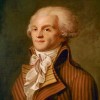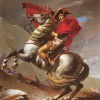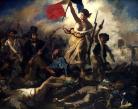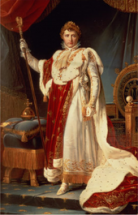Jean-Jacques Rousseau
28 Jun 1712 to 2 Jul 1778
Jean-Jacques Rousseau, born in Geneva, Switzerland, is named "The Father of Romanticism" because of his work in the Enlightenment period, where he wrote a very detailed and uncencored autobiography, titled Confessions. Rousseau's thinking was so forward, it did not conform to societal rules of the Elightenment period, paving the way for other creative minds to share their work in the upcoming era. This provided writers such as Mary Shelley, Edgar Allen Poe, and John Keats with a window of opportunity to show their creativity in their "abnormal" works. The individuality of their pieces brought forth the freedom, love of nature, and expressionism of the Romantic period.

 This timeline is part of ENGL 202's build assignment. Research some aspect of Romanticism and then contribute what you have learned to our shared class resource. As the assignment states, "Add one timeline element, one map element and one gallery image about the Romantic period to our collective resources in COVE Editions. Provide sufficient detail to explain the historical or cultural detail that you are presenting. Interlink the three objects. A few timeline elements have already been added (borrowing from
This timeline is part of ENGL 202's build assignment. Research some aspect of Romanticism and then contribute what you have learned to our shared class resource. As the assignment states, "Add one timeline element, one map element and one gallery image about the Romantic period to our collective resources in COVE Editions. Provide sufficient detail to explain the historical or cultural detail that you are presenting. Interlink the three objects. A few timeline elements have already been added (borrowing from 




![Cruikshank note[1]](http://www.branchcollective.org/wp-content/uploads/2012/01/Cruikshank-note1-100x100.png)















 On 11 June 1831, William Wordsworth composed the sonnet, "To B.R. Haydon, on Seeing His Picture of Napoleon Buonaparte on the Island of St. Helena," in response to Benjamin Robert Haydon's portrait of Napoleon, pictured here. Image:
On 11 June 1831, William Wordsworth composed the sonnet, "To B.R. Haydon, on Seeing His Picture of Napoleon Buonaparte on the Island of St. Helena," in response to Benjamin Robert Haydon's portrait of Napoleon, pictured here. Image: 

 On 31 August 1840, William Wordsworth composed the sonnet, "On a Portrait of the Duke of Wellington upon the Field of Waterloo, by Haydon." The poem is a companion to his earlier 11 June 1831 sonnet, "To B.R. Haydon, on Seeing His Picture of Napoleon Buonaparte on the Island of St. Helena." Wordsworth informed Isabella Fenwick in 1843 that he composed the sonnet while ascending Helvellyn with his daughter (on horseback) and her husband. In response to this sonnet, Haydon began a portrait of Wordsworth, which he sent to Elizabeth Barrett Browning for her to view before he completed it. Elizabeth Barrett Browning wrote her own sonnet, "On a Portrait of Wordsworth," as a result. Image:
On 31 August 1840, William Wordsworth composed the sonnet, "On a Portrait of the Duke of Wellington upon the Field of Waterloo, by Haydon." The poem is a companion to his earlier 11 June 1831 sonnet, "To B.R. Haydon, on Seeing His Picture of Napoleon Buonaparte on the Island of St. Helena." Wordsworth informed Isabella Fenwick in 1843 that he composed the sonnet while ascending Helvellyn with his daughter (on horseback) and her husband. In response to this sonnet, Haydon began a portrait of Wordsworth, which he sent to Elizabeth Barrett Browning for her to view before he completed it. Elizabeth Barrett Browning wrote her own sonnet, "On a Portrait of Wordsworth," as a result. Image: 
















